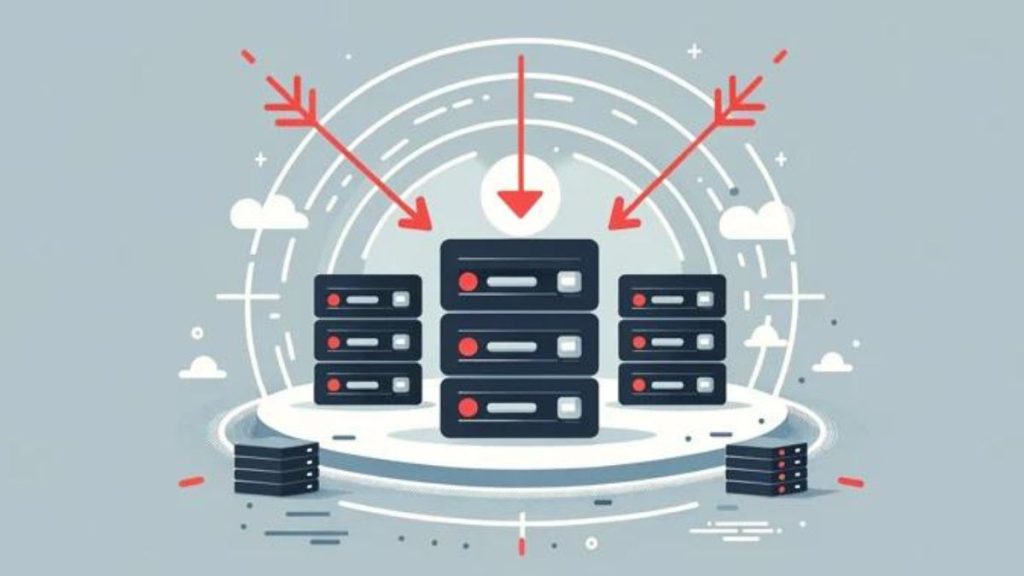A new vulnerability in the HTTP/2 protocol, called “CONTINUATION Flood,” (DoS) can lead to denial of service (DoS) attacks and potentially crash your server with just a single connection from an attacker.
HTTP/2, introduced as an update to the HTTP protocol in 2015, was designed to enhance web performance significantly. It achieved this by introducing several key features, including binary framing for efficient data transmission, multiplexing to enable multiple requests and responses over a single connection, and header compression to reduce overhead.
How Does It Work?
Recent research by Barket Nowotarski has shed light on critical flaws within the HTTP/2 protocol. Nowotarski’s findings indicate that these vulnerabilities stem from the improper handling of HTTP/2 CONTINUATION frames in many implementations of the protocol.
To understand the issue, it’s essential to grasp how HTTP/2 messages are structured. Furthermore, these messages consist of header and trailer sections serialized into blocks. Additionally, these blocks can be fragmented across multiple frames for transmission, with CONTINUATION frames being utilized to stitch the stream together.
The oversight in many implementations lies in the lack of proper frame checks. This allows malicious actors to exploit the protocol by sending an excessively long string of frames without setting the ‘END_HEADERS’ flag. Consequently, servers may experience out-of-memory crashes or CPU resource exhaustion as they attempt to process these frames.
Of particular concern is the risk of out-of-memory conditions, which can result in server crashes using a single HTTP/2 TCP connection in certain implementations. Nowotarski emphasizes the severity of this issue, highlighting that affected implementations fail to limit the size of header lists built using CONTINUATION frames.
Vulnerabilities and Exposures (CVE) IDs
Several Common Vulnerabilities and Exposures (CVE) IDs have been assigned to different HTTP/2 implementations vulnerable to these attacks. These vulnerabilities range from memory leaks and consumption to CPU exhaustion, impacting a variety of platforms and services, including Node.js, Envoy, Tempesta FW, amphp/http, Go, Apache httpd, and Apache Traffic Server.
- CVE-2024-27983: Affects Node.js HTTP/2 server. Sending a few HTTP/2 frames can cause a memory leak due to a race condition, leading to a potential DoS.
- CVE-2024-27919: Affects Envoy’s oghttp codec. Unlimited memory consumption due to not resetting a request when header map limits are exceeded.
- CVE-2024-2758: Relates to Tempesta FW. Its rate limits are not effectively preventing empty CONTINUATION frame attacks, potentially allowing DoS.
- CVE-2024-2653: Affects amphp/http. It collects CONTINUATION frames in an unbounded buffer, risking an OOM crash if the header size limit is exceeded.
- CVE-2023-45288: Affects Go’s net/http and net/http2 packages. Allows an attacker to send an arbitrarily large set of headers, causing excessive CPU consumption.
- CVE-2024-28182: Involves an implementation using the nghttp2 library, which continues to receive CONTINUATION frames, leading to a DoS without proper stream reset callback.
- CVE-2024-27316: Affects Apache Httpd. A continuous stream of CONTINUATION frames without the END_HEADERS flag set can be sent, improperly terminating requests.
- CVE-2024-31309: Affects Apache Traffic Server. HTTP/2 CONTINUATION A DoS attack can cause excessive resource consumption on the server.
- CVE-2024-30255: Affects Envoy versions 1.29.2 or earlier. Vulnerable to CPU exhaustion due to a flood of CONTINUATION frames, consuming significant server resources.
Severe impact
The gravity of the situation is underscored by the confirmation from vendors and HTTP/2 libraries, including Red Hat, SUSE Linux, Arista Networks, and others, that they are impacted by at least one of the identified CVEs. With HTTP traffic constituting a significant portion of all internet transfers, the widespread nature of these vulnerabilities demands urgent attention.
Nowotarski warns that addressing these vulnerabilities may prove challenging for server administrators, particularly without adequate HTTP/2 knowledge. Malicious requests exploiting these vulnerabilities may not be readily detectable in access logs, complicating mitigation efforts.
Protecting Your Web Server
Here’s what you can do to mitigate the risk:
- Patch Early, Patch Often: This is the golden rule of security. Check with your software vendors for updates that address these vulnerabilities. Updating your HTTP/2 libraries and server software is critical.
- Stay Informed: Subscribe to security advisories from CERT/CC or reputable security news sources. This will keep you updated on the latest threats and available patches.
- Consider Additional Security: While patching is essential, consider implementing extra security measures. Web application firewalls (WAFs) can add another layer of defense by filtering out malicious traffic before it reaches your server.
As threat actors continue to exploit newly discovered DDoS techniques, timely upgrades to impacted servers and libraries are imperative. Failure to address these vulnerabilities promptly could expose servers to exploitation, posing significant risks to online services and users alike.
Related Articles:

